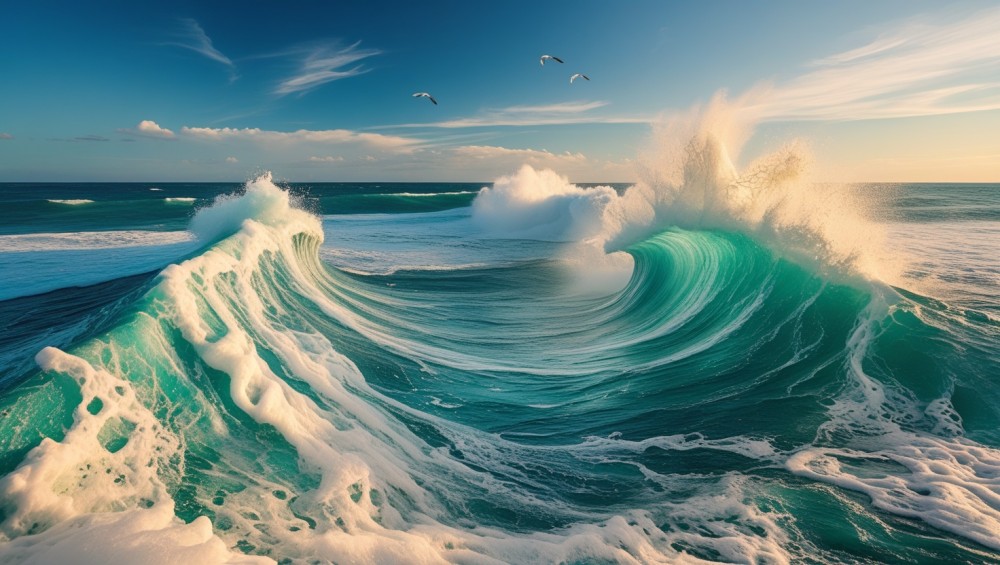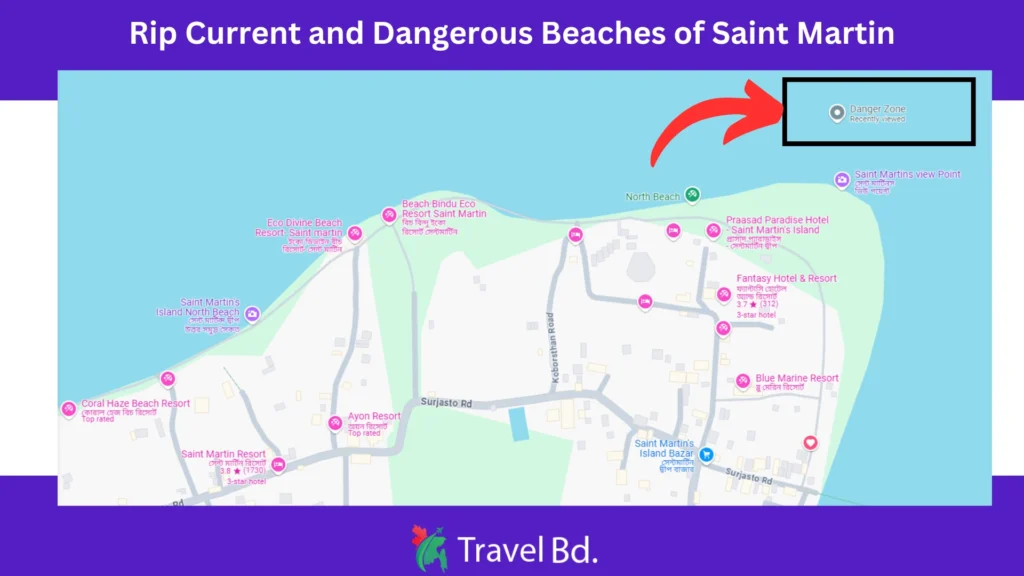Rip Current and Dangerous Beaches of Saint Martin: Essential Knowledge for Everyone
Saint Martin is famous as Bangladesh’s only island with blue waters, attracting thousands of tourists annually. With much anticipation, all ferry routes to Saint Martin have resumed this year. For some, it’s their first visit; for others, it’s a repeat trip. However, certain facts about Saint Martin must be shared, especially at the beginning of each travel season, to ensure that no one’s visit turns tragic.
Do you remember the viral drama “Out of Network” or the heartbreaking incident involving students from Ahsanullah University who tragically lost their lives in Saint Martin years ago? Today, we’ll discuss some vital aspects related to such incidents.
If you look at the map of Saint Martin and the areas with the highest number of fatalities, you’ll notice they occur predominantly at the headland or corner of the island, as shown in Image 2. This area, with its protruding edge, is a hotspot for dangerous rip currents.
In contrast to other countries, where authorities often restrict access to the beach during low tide, many in Bangladesh venture into the water unknowingly, leading to tragic accidents. To avoid such tragedies, it’s essential to check the tidal times on Google before visiting beaches like Cox’s Bazar or Kuakata.
Besides low-tide drowning incidents, there’s another significant danger: rip currents. Unfortunately, awareness of rip currents is very low in Bangladesh.
What Is a Rip Current?
Rip currents, or “reverse currents,” are waves that hit the shore and then flow back toward the sea, sometimes through narrow channels. These currents can drag swimmers caught in their path into deeper waters. Approximately 80% of beach-related deaths worldwide are caused by rip currents, including an average of 22 deaths annually in Australia.
In Saint Martin, most beach-related deaths are likely due to rip currents, particularly around the narrow headland area. This area aligns with the natural characteristics of rip currents.

Identifying Rip Currents
One dangerous trait of rip currents is that they often appear deceptively calm and deep blue. Sometimes, you might notice objects floating away or breaking waves not forming in a specific area. Such signs indicate a rip current in action.
Surviving a Rip Current
If caught in a rip current, swimmers should avoid swimming directly back to the shore. Instead, swim parallel to the beach to escape the current’s pull. Fighting the current head-on is futile and exhausting.
Types of Rip Currents
There are three main types of rip currents:
- Fixed Rip Currents: Occur in specific areas, such as near bridges or underwater depressions.
- Flash Rip Currents: Can occur unexpectedly due to wind or weather changes.
- Topographic Rip Currents: These form due to natural land features like headlands.
The headland area of Saint Martin is prone to topographic rip currents because of its natural structure. Winds can create channels on both sides of the headland, increasing the likelihood of rip currents. These dangerous channels often deceive tourists who mistake them for calm waters.
Important Warning for Tourists
Avoid entering the water at the northern beach, especially near the headland area marked in Image 5. Although the northern beach is the most attractive for swimming, it is also the most perilous. Locals know not to swim in this area and often warn tourists, but not everyone is aware. This lack of knowledge often leads to preventable tragedies.
Final Thoughts
Due to Saint Martin’s natural features, rip currents are a regular occurrence, especially in the headland area. Any fatality here should not be dismissed as an accident but rather a preventable disaster. Awareness and education about these risks are vital to prevent further loss of life.
While rip currents exist on beaches worldwide, proper precautions can minimize their danger. There’s no need to fear the ocean but always remain cautious and informed.
Go on tours, trek, and explore freely. But please ensure that your actions do not harm nature or the environment.


